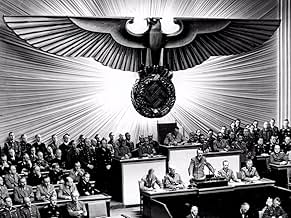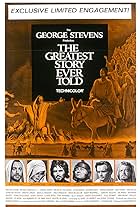Produced and presented as evidence at the Nuremberg war crimes trial of Hermann Göring and twenty other Nazi leaders.Produced and presented as evidence at the Nuremberg war crimes trial of Hermann Göring and twenty other Nazi leaders.Produced and presented as evidence at the Nuremberg war crimes trial of Hermann Göring and twenty other Nazi leaders.
Photos
- Director
- Writer
- All cast & crew
- Production, box office & more at IMDbPro
Storyline
Did you know
- TriviaProduced by the U.S. Council for the Prosecution of Axis Criminality for the Nuremberg Trials (1945).
- ConnectionsFeatured in Die Klage gegen die Franco-Diktatur (2018)
Featured review
This film is a documentary in the truest sense of the word, and the film was admitted as evidence at the Nuremberg trials in December 1945. The first part of the film is basically home movies and news reels about what was happening in Germany in the 20s and early 30s, leading up to the Nazi takeover in 1933 and some of their early actions (book burning, boycott of the Jews). After that it is mostly official news reels about Nazi activities from 1935 to 1944, and then curiously stops abruptly.
As a documentary it has lots of faults, although as a compilation of information about the Nazi movement it is priceless.
There is no real continuity in the movement from one segment to another, all of them defined chronologically. IOW one has to have a good idea of what you're looking at for it to be of importance.
A good deal of the film consists of the German language with sporadic translations that are often much shorter than the original German part of the film. There is no attempt to identify the various party leaders.
George Stevens (1904-1975) took time out from a busy career as a director to work for the war department, and made 3 films, of which this was the last. He was nominated for an Oscar 5 times and won twice ("Giant" and "A Place in the Sun"). 16 of his films generated 69 Oscar nominations and 15 wins. Some of his memorable films prior to his war service include comedies like "Woman of the Year" (1942), and "Alice Adams" (1935). After his war experience, his major films include "Diary of Anne Frank" (1959), "Shane" (1953), and "I Remember Mama" (1948). Both of his Oscar wins come from the period after the war service.
Budd Schulberg (1914-2009) helped work on the film after he finished his work with director John Ford. Schulberg is known for his novels – e.g., "What Makes Sammy Run" (1941), "The Harder They Fall" (1947) – and for his original screenplays – "On the Waterfront" (1954), "A Face in the Crowd" (1957).
If you're interested in this type of documentary, Hitler's Death Squad (aka Nazi Death Squads) is a far better film, not merely as a film, but for some of the footage which is truly remarkable. I saw it on National Geographic TV channel. It's the story of the Nazi Einsatzgruppen, especially the two years surrounding the June 1944 Allied invasion of Normandy.
As a documentary it has lots of faults, although as a compilation of information about the Nazi movement it is priceless.
There is no real continuity in the movement from one segment to another, all of them defined chronologically. IOW one has to have a good idea of what you're looking at for it to be of importance.
A good deal of the film consists of the German language with sporadic translations that are often much shorter than the original German part of the film. There is no attempt to identify the various party leaders.
George Stevens (1904-1975) took time out from a busy career as a director to work for the war department, and made 3 films, of which this was the last. He was nominated for an Oscar 5 times and won twice ("Giant" and "A Place in the Sun"). 16 of his films generated 69 Oscar nominations and 15 wins. Some of his memorable films prior to his war service include comedies like "Woman of the Year" (1942), and "Alice Adams" (1935). After his war experience, his major films include "Diary of Anne Frank" (1959), "Shane" (1953), and "I Remember Mama" (1948). Both of his Oscar wins come from the period after the war service.
Budd Schulberg (1914-2009) helped work on the film after he finished his work with director John Ford. Schulberg is known for his novels – e.g., "What Makes Sammy Run" (1941), "The Harder They Fall" (1947) – and for his original screenplays – "On the Waterfront" (1954), "A Face in the Crowd" (1957).
If you're interested in this type of documentary, Hitler's Death Squad (aka Nazi Death Squads) is a far better film, not merely as a film, but for some of the footage which is truly remarkable. I saw it on National Geographic TV channel. It's the story of the Nazi Einsatzgruppen, especially the two years surrounding the June 1944 Allied invasion of Normandy.
- drjgardner
- Oct 3, 2015
- Permalink
Details
- Release date
- Country of origin
- Language
- Also known as
- Der Nazi-Plan
- Production company
- See more company credits at IMDbPro
- Runtime2 hours 7 minutes
- Color
- Sound mix
- Aspect ratio
- 1.33 : 1
Contribute to this page
Suggest an edit or add missing content






















